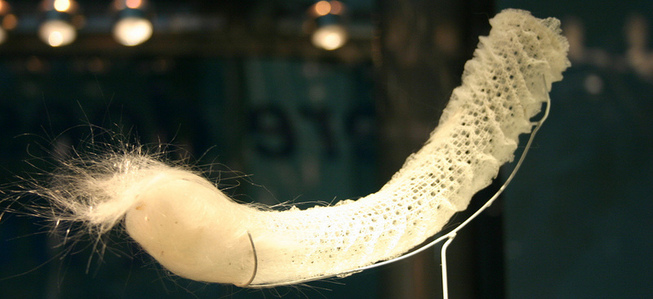Here are just two examples of organisms that use sophisticated filtration techniques to extract algae from surrounding water. This will be updated as we find more!...
Salps - filtration
Salps feed on microscopic phytoplankton, an algae which is often invisible to the naked eye. The Salp moves by drawing in and expelling water under pressure through rhythmic contractions of its circular body walls. The inhalent water is forced through an internal mucus net to extract phytoplankton. Nets are efficient at removing particles many times smaller than their 1.5 micron holes, and spanning four orders of magnitude in size (that's like eating everything from a mouse to a horse...). Filtration characteristics are in part determined by
- velocity of water through the net, and
- the percentage of the net that is rigidly supported.
- Filters for treatment of waste water, swimming pools.
Find Out More
Read from the Woods Hole Oceanographic Institute (WHOI)
To Catch the Ocean's Tiniest Organisms
Watch short documentary (2 minutes)
Salps: Exploding Populations
Read from the Woods Hole Oceanographic Institute (WHOI)
To Catch the Ocean's Tiniest Organisms
Watch short documentary (2 minutes)
Salps: Exploding Populations
Venus Flower Basket - filtration
The Venus Flower Basket, also known as a 'glass sponge', lives at depths of up to 1000m in the south Pacific Ocean, off the coast of Japan, and is composed entirely of 6-pointed siliceous spicules. Here the water is cold (2-11°C) and silica levels are high. The animal's structure forms a cylindrical, thin walled, vase-shaped tube with a central atrium which is used to channel a current, filtering water in through their tissues. Spicules are 'woven' together forming a very fine mesh, giving the body a high rigidity and allowing it to survive under the pressures experienced at great depths.
Possible Application:
Possible Application:
- Filter systems for treatment of waste water.
- Ventilation system in a large building has used the sponge as inspiration for moving air around.



